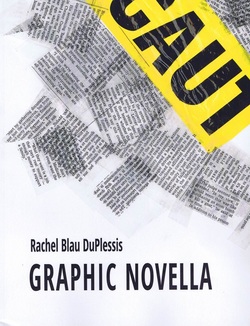
This multi-genre text begins with a collagist-narrator in search of plot. It ends overwhelmed by plot, as her collaged fragments repeatedly reveal the inter-related climatological and discursive apocalypses that await humankind. The narrator finds herself creating a desperation text, one that seems to her socially useless yet personally essential. Cassandra-like, she is condemned to foresee in her fragments the likely collapse of civilization while lacking the ability to communicate what she foresees. There's a sly allusion here to – and probable critique of – the ending of The Waste Land.
In a perhaps unintended way, Graphic Novella is also a commentary on the predicament of contemporary innovative writing, a writing which must draw on all its complexities to respond to the unprecedented changes this possibly final phase of the industrial revolution is bringing down on global culture, but which is consequently unreadable by most of the citizens of that culture. “How can one even begin to write this – it is only to imitate the half-collapsed. The helpless hand. O O O that corny poetics of mimesis” (28) the narrator laments.
At the beginning of the novella the narrator’s collages occupy the right-hand page and her often surprised and dismayed readings of them the left-hand one. But as her confidence in her artistry
 RSS Feed
RSS Feed